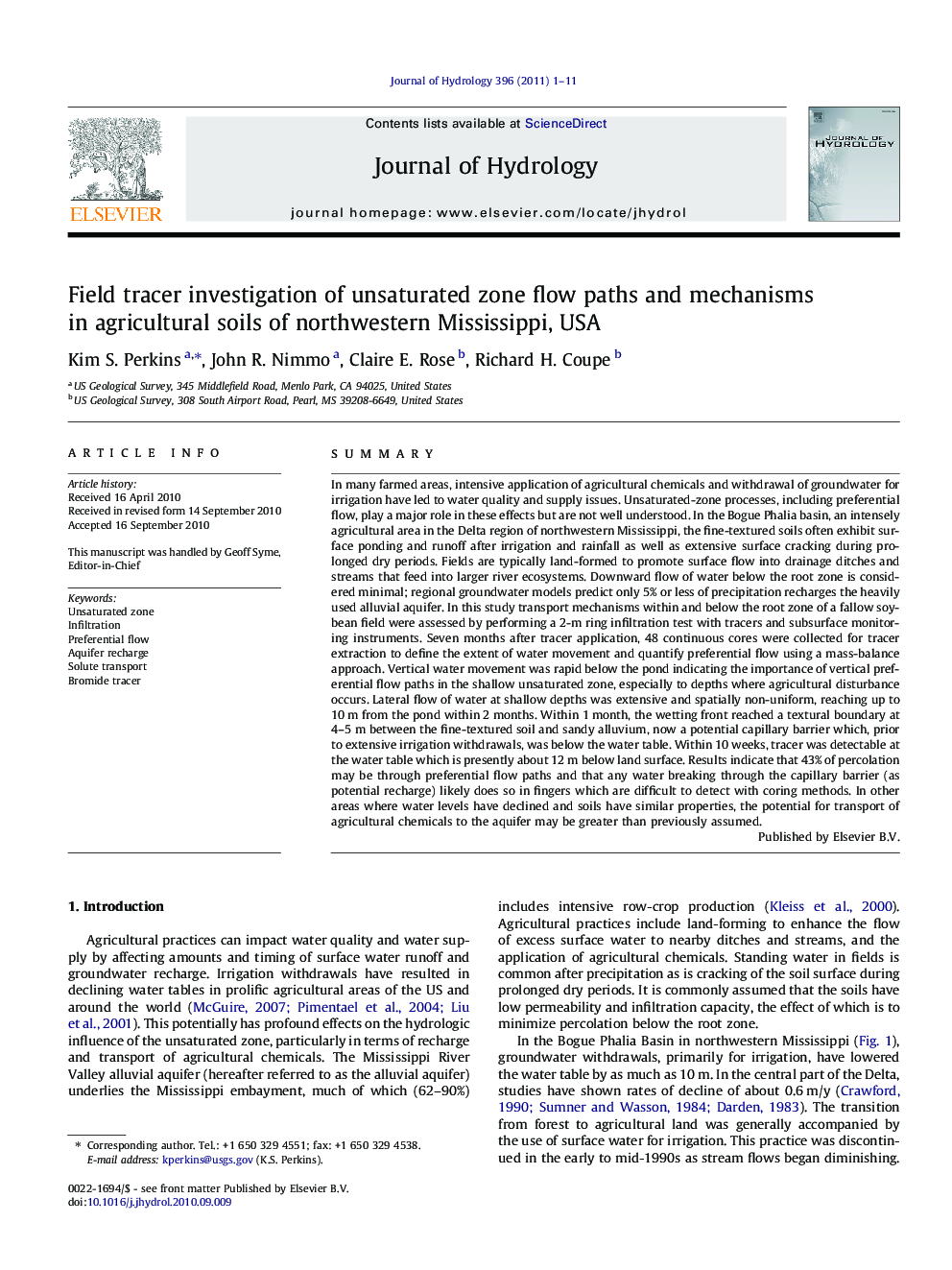| Article ID | Journal | Published Year | Pages | File Type |
|---|---|---|---|---|
| 4577966 | Journal of Hydrology | 2011 | 11 Pages |
SummaryIn many farmed areas, intensive application of agricultural chemicals and withdrawal of groundwater for irrigation have led to water quality and supply issues. Unsaturated-zone processes, including preferential flow, play a major role in these effects but are not well understood. In the Bogue Phalia basin, an intensely agricultural area in the Delta region of northwestern Mississippi, the fine-textured soils often exhibit surface ponding and runoff after irrigation and rainfall as well as extensive surface cracking during prolonged dry periods. Fields are typically land-formed to promote surface flow into drainage ditches and streams that feed into larger river ecosystems. Downward flow of water below the root zone is considered minimal; regional groundwater models predict only 5% or less of precipitation recharges the heavily used alluvial aquifer. In this study transport mechanisms within and below the root zone of a fallow soybean field were assessed by performing a 2-m ring infiltration test with tracers and subsurface monitoring instruments. Seven months after tracer application, 48 continuous cores were collected for tracer extraction to define the extent of water movement and quantify preferential flow using a mass-balance approach. Vertical water movement was rapid below the pond indicating the importance of vertical preferential flow paths in the shallow unsaturated zone, especially to depths where agricultural disturbance occurs. Lateral flow of water at shallow depths was extensive and spatially non-uniform, reaching up to 10 m from the pond within 2 months. Within 1 month, the wetting front reached a textural boundary at 4–5 m between the fine-textured soil and sandy alluvium, now a potential capillary barrier which, prior to extensive irrigation withdrawals, was below the water table. Within 10 weeks, tracer was detectable at the water table which is presently about 12 m below land surface. Results indicate that 43% of percolation may be through preferential flow paths and that any water breaking through the capillary barrier (as potential recharge) likely does so in fingers which are difficult to detect with coring methods. In other areas where water levels have declined and soils have similar properties, the potential for transport of agricultural chemicals to the aquifer may be greater than previously assumed.
